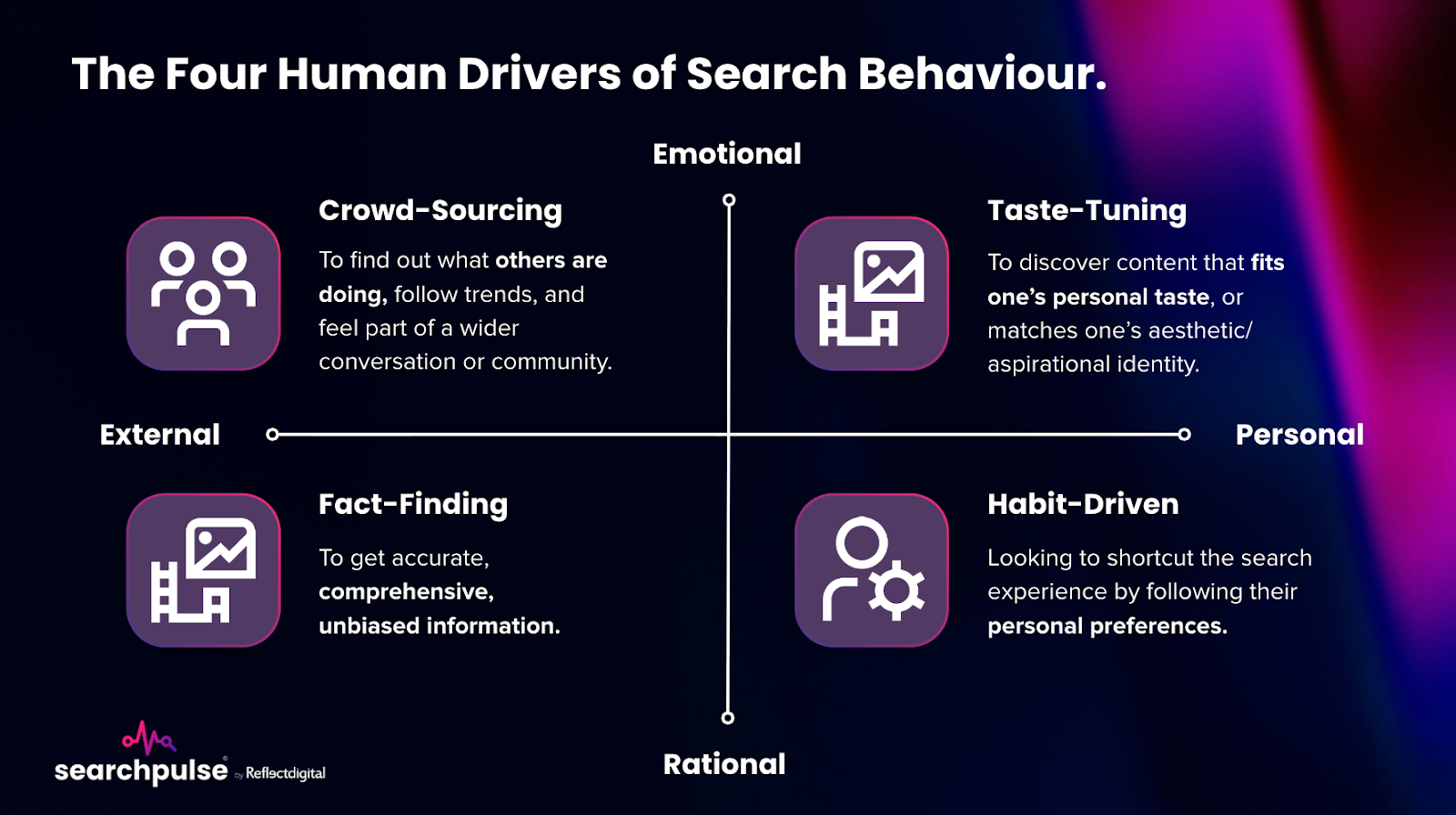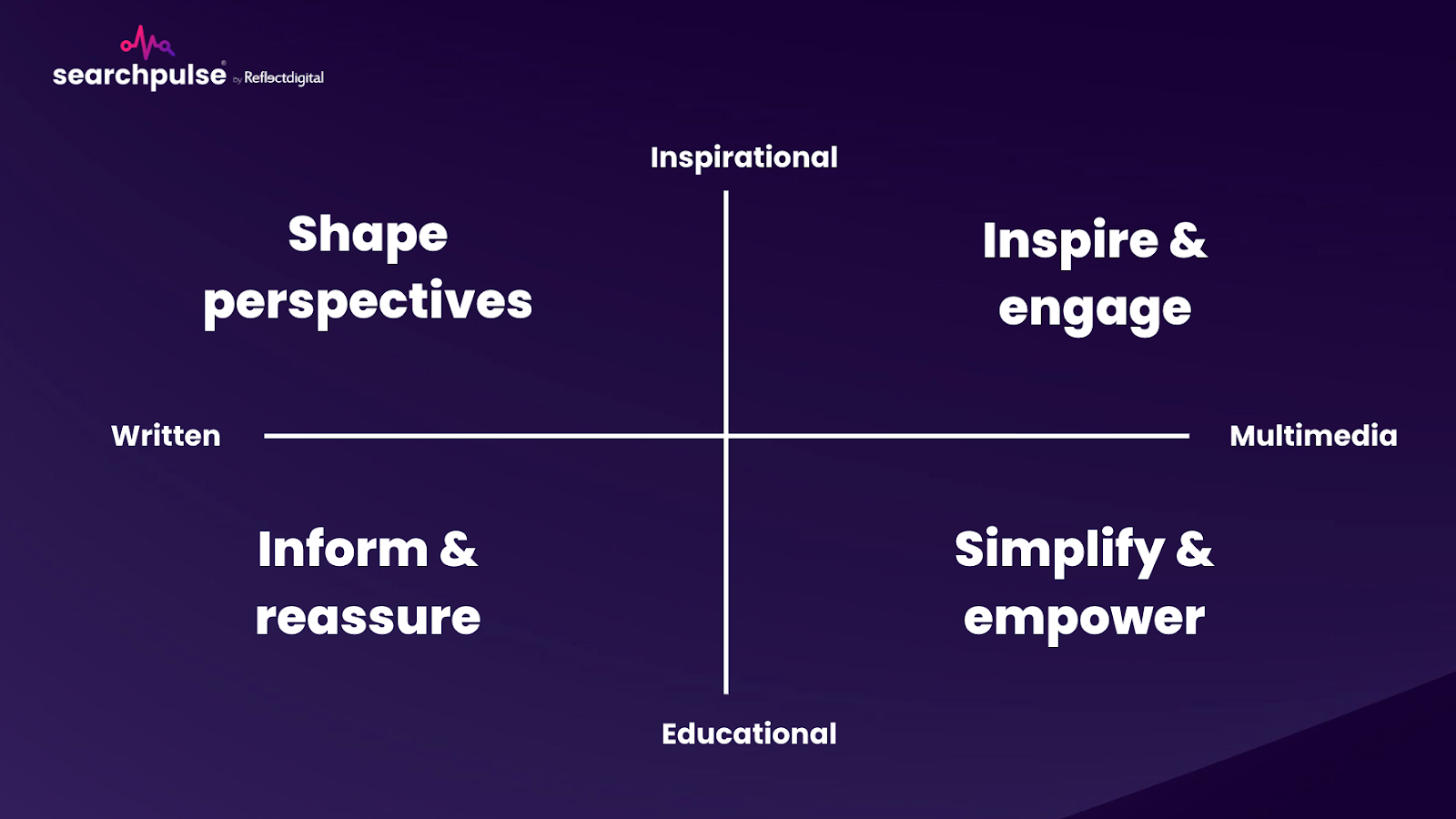How to plan for GEO in 2026 and evolve your search strategy

We’ve spent years as an industry obsessed with what people search for.
Now, it’s time to be just as focused on where they search.
Generative engine optimization (GEO) isn’t just another tactic – it’s a new lens, a new mindset that’s reshaping how we think about search, content, and customer discovery.
This article will help you:
- Plan financially and strategically for GEO in 2026.
- Understand what it means for your team, your content, your data, and, most importantly, your audience.
Follow the user: From what to where
Search isn’t a single destination anymore.
It’s a journey made up of moments, typed, spoken, tapped, prompted.
Over the past nine months, we’ve been tracking how people search, and one thing’s obvious:
- Google is still king with 417 billion searches per month.
- ChatGPT alone is processing 72 billion messages a month.
- And we’ve seen that users under 44 use, on average, five platforms to search.
From TikTok to ChatGPT to review sites and Reddit, discovery is diversifying, and your strategy must follow.
The most exciting aspect of this is that it is still in its early days. You have the opportunity to lead, but you need to be willing to adapt.
Why multi-platform searching offers such an opportunity
The mere exposure effect shows us that familiarity builds trust.
If your audience sees your brand in multiple, relevant touchpoints, your perceived credibility increases, even before they land on your site.
But that can’t happen if your strategy still treats search as a single-channel activity.
So, where to begin?
Start with audience research – deep, layered, and behavior-led.
Combine surveys, social listening, focus groups, and analytics to find out:
- Where your audience is searching.
- What they’re trying to do.
- What motivates them in that moment.
Map against four core human search drivers:
- Fact-finding: Rational, objective answers.
- Crowd-sourcing: Validation from peers and communities.
- Taste-tuning: Inspiration that fits their identity.
- Habit-driven: Shortcuts based on trust and familiarity.

If your budget planning doesn’t start with this understanding, you’re essentially building a strategy in the dark.
Rethink ranking: Optimize your search real estate
The SEO industry has rightly been fixated on AI Overviews, but many brands are missing the wider picture.
Search real estate has never been more diverse, with images, sitelinks, video carousels, reviews, forum answers, shopping links, and AI-powered responses all competing for attention.
We need to think beyond ranking and instead focus on occupying the spaces where our audience is actively looking for reassurance, answers, or inspiration.
Here’s a simple content format framework to cover the full spectrum of search intent:
Shape perspectives: Opinion-led, expert content
- Mindset: Curious, reflective, exploring ideas.
- Brand opportunity: Build thought leadership and spark category conversations.
- Example formats and platforms: Opinion pieces, newsletters, blogs – X, Medium, Threads.
Inspire and engage: Short-form and visual, emotionally resonant
- Mindset: Seeking emotion, identity, and connection often through entertainment.
- Brand opportunity: Build affinity through authentic, visual storytelling.
- Example formats and platforms: Short-form video, UGC, reels – TikTok, Instagram, YouTube Shorts.
Inform and reassure: Long-form, detail-rich content
- Mindset: Seeking facts, clarity, and confidence before deciding.
- Brand opportunity: Build trust with expertise and transparency.
- Example formats and platforms: Guides, FAQs, whitepapers – Google, Bing, specialist AI tools.
Simplify and empower: Explainer and how-to formats
- Mindset: Wants practical help and easy steps to act.
- Brand opportunity: Remove friction with visual learning and demonstration.
- Example formats and platforms: How-tos, demos, webinars – YouTube, LinkedIn Live.

Your GEO budget should be allocated across all these types of content, not just to rank but to show up where your audience is looking in the format that suits their mindset.
Dig deeper: GEO and SEO: How to invest your time and efforts wisely
Build and expose your entity authority
In a GEO-led world, your brand needs to be understood, not just crawled or linked to.
Large language models (LLMs) don’t see your brand the way a search engine does.
They need structured clarity to learn who you are, what you do, and why you’re credible.
That means treating your business like an entity:
- Brand.
- People.
- Products.
- Expertise.
- Processes.
Yes, most businesses already have some of these assets, like author bios, about pages, product descriptions, and awards, but they’re often fragmented or buried.
Here’s the behavioral point: humans (and machines) trust logic they can see.
Your internal recommendation engine? Your customer support process? Your buying guide?
If any of this logic lives in code or internal tools but never gets surfaced, LLMs and users can’t trust what they don’t understand.
So make your decision-making visible:
- Use “How we choose” content.
- Add explainer videos or structured markup.
- Link related resources in a way that mimics how your business and team think, not just how your website flows.
Create transparent, traceable journeys that allow both users and machines to understand your brand’s logic, not just your pages.
Invest in trust and credibility
We’re not in the game of chasing algorithms.
We’re in the business of earning trust, and GEO makes that more important than ever.
In 2026, E-E-A-T is going nowhere. It needs to be your strategic cornerstone.
That means your budget should include:
- Always-on digital PR: Fresh mentions and citations in high-authority sources.
- Data storytelling: Reports, whitepapers, research built to be referenced.
- Customer review strategies: Reputation, sentiment, and response.
- Awards and accreditations: Third-party trust signals.
- Behavioral insight: To frame your messaging in line with audience values.
Your digital PR strategy should be mapped like this:
- 45% always-on commentary and seasonal hooks.
- 30% evergreen assets that build over time.
- 20% integration with on-site content and schema.
- 5% experimentation (multimedia, partnerships, AI-native formats).
Every campaign should answer the question:
- What would my audience type into Google, or ask an assistant, and would this be the answer they’d trust?
If the answer is yes, you’re building GEO-ready content.
Dig deeper: How multimodal discovery is redefining SEO in the AI era
Think about the messenger
Once you know what to say and where to say it, the final piece of the trust puzzle is who says it.
It’s not enough to understand where to show up and what to say. You also need to think about who has the best voice.
There is a behavioral bias known as the messenger effect, which means humans evaluate information based on the source.
This offers a huge opportunity when we consider who should say what for our brand.
There are four key voices to consider:
- Brand: Your voice
- What you stand for and want to be remembered for.
- UGC: Their voice
- What your audience is saying and sharing about you.
- Influencer: A trusted voice
- People who add credibility and humanize your brand story.
- Media: An amplified voice
- Platforms and publications that extend your reach and authority.
Planning this early in your strategy will ensure you have the budget available to get this bit right, alongside all of the other activities you need to cover.
Dig deeper: Search behavior, decoded: What platform preference really tells us
Get the newsletter search marketers rely on.
See terms.
Rethink your reporting strategy
The old saying still holds true: if you can’t measure it, you can’t manage it.
But GEO visibility can’t be tracked with traditional SEO tools alone.
Your budget may need to include:
- Tracking inclusion in AI overviews and assistant responses.
- Monitoring brand mentions and citations.
- Measuring entity performance through structured data.
- Analyzing sentiment and trust signals.
- Building internal systems for first-party behavioral data.
As large language models index brands based on what they know, owning and understanding your data becomes a real competitive edge.
And when you align that data with behavior, the insights get even more powerful.
For example, wouldn’t you want to know how often your audience shares your brand through WhatsApp?
With server log analysis, you can.
That kind of visibility adds another layer of understanding around audience sentiment and journey.
WhatsApp is just one piece of the discovery puzzle.
Think about how often people turn to a group chat or community and ask, “Can anyone recommend a business for…?”
Those conversations are search signals too – and they can show whether your strategy is truly working.
Here’s the strategic takeaway: the more insight you have into how your audience behaves and where your brand is referenced, the better you can:
- Personalize experiences.
- Adapt your messaging.
- Automate intelligently.
It’s worth noting that GEO tracking is still in its early days.
The data available today is nowhere near what will emerge in the next few years.
So, when investing in tools, do it wisely – the next great platform might not even exist yet.
Also consider how frequently you need to report and to what depth, since the cost of data collection can rise quickly.
Budget for people, not just platforms
Let’s talk about the human side.
GEO success depends not just on content or tools but also on cross-functional teams that integrate SEO, PR, content, data, and behavioral insight.
Most businesses will need to increase their:
- Talent budget: Hiring hybrid thinkers who understand search, AI, and behavior.
- Training budget: Raising digital and behavioral literacy across departments.
- Culture budget: Breaking down silos and encouraging co-creation.
You can’t assume audience understanding.
You need people or partners who understand how humans search and how machines learn.
That only happens when you invest in capability building, not just campaigns.
Dig deeper: How to keep your SEO skills sharp in an AI-first world
Build a GEO-aligned budget structure
Traditional SEO budgets were split across:
- Technical SEO.
- Content.
- Digital PR (with a focus on links).
But that’s not enough anymore.
Here’s a more aligned budget framework for GEO:
| Area | Approx. % | Focus |
| Core SEO | 40% | Maintain and evolve technical and content foundations |
| Digital PR / E-E-A-T | 25% | Authority, mentions, trust |
| Data and reporting | 20% | Insight, attribution, and entity tracking |
| Training | 10% | Cross-skill development and team integration |
| Innovation | 5% | New formats, platforms, AI-native content |
This isn’t about cutting your SEO budget – it’s about reframing what visibility means and where it happens.
Most brands will end up spending more, not less, but through a broader, cross-platform lens.
Use your audience insight to prioritize
We’ve covered a lot – and there’s plenty to consider, especially as search becomes increasingly multi-platform.
You might be thinking, I don’t have the budget to do everything, and that’s okay.
Your audience insight should guide what comes first. If you’ve done the groundwork, you should already know:
- Which platforms matter most based on search volume.
- Why your audience turns to each platform and what motivates them.
- The types of content that fit each context and mindset.
- Which messengers or voices carry the most influence at each stage.
With that understanding, your goal is to cover enough ground to build real relationships – not just show up for the conversion moment.
The marketing funnel still exists, but it’s evolved into what Google once called the messy middle.
That means you need different content variations across the journey, not just at the end when someone’s ready to buy.
Every part of your strategy should operate as a test-and-learn plan.
Keep assessing what’s working and what isn’t – but first, define what good looks like.
Success won’t always mean volume. Sometimes it’s engagement depth, share of voice, or sentiment shift.
And don’t lose sight of your competitors.
Right now, there’s more opportunity to lead than we’ve seen in years of traditional SEO.
Spot the gaps, act early, and your brand will be the one setting the pace, not catching up.
Dig deeper: The fractured future of search: New rules for SEO in the AI age
Design for discovery – everywhere
We haven’t stopped Googling – but we’ve started seeking answers in more places, and with different expectations.
Users now want faster validation, clearer signals, and richer content.
Sometimes they want a chatbot, sometimes a TikTok, sometimes a thread – sometimes all three.
That’s why GEO matters. It’s about being found by the right person, in the right place, at the right time, with the right content.
As you plan for 2026, ask:
- Do we understand our audience’s motivations?
- Are we showing up everywhere they search?
- Are we building trust across every stage of the journey?
- Are we giving our teams the tools, time, and trust to deliver?
Visibility in 2026 won’t come from gaming the system.
It will come from understanding the human behind the query – and showing up with something truly helpful.
The future is search everywhere optimization.







Recent Comments